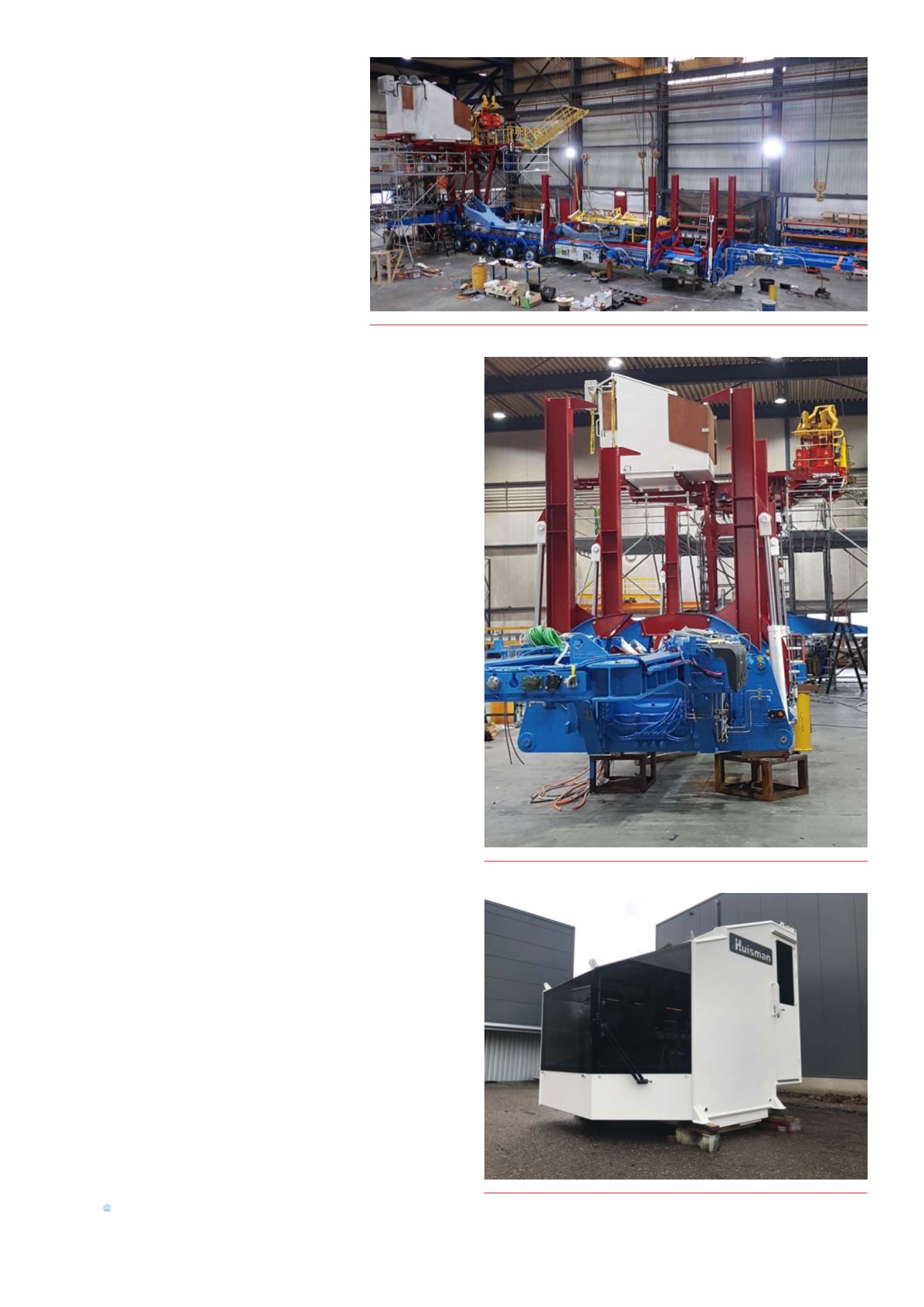
May/June 2020
Oilfield Technology
|
33
and aligns the handled pipe with the drill string in
the rotary table, the stick-up. Removing the need
for people to work together with the machinery
here entails a potentially substantial improvement
in safety.
The combination of a hydraulic elevator, iron
roughneck and hydraulic power slips, developed
by the company, completes the full cycle of pipe
tripping. The stabbing of the pipe and making the
connection is a fully automated sequence.
In this instance, automation does not mean
the cabin masterminding operations with support
from a rig crew on the floor; it means no personnel
required on the floor, with 1800 ft/hr tripping
speeds being achieved.
For the bottomhole assembly (BHA), as for
odd-sized equipment, a procedure has been put
in place that makes use of the mast telescopic jib winch to bring
equipment from the ground level direct to the well centre or to the
mouse hole position. Although tugger winches are still installed on
the rig, dragging tools over the floor by using tugger wires is not
required for these operations.
Casingrunning
With automated tripping processes and drilling connections having
been implemented, there was still one hurdle to moving personnel
entirely out of the red zone during routine operations: the lack of
fully automated casing running.
A handler was developed that could handle tubulars
between 2 7/8 in. and 13 3/8 in., e.g. casing, collars and drill pipe.
The gripper is a one-size-fits-all design, removing the need for
manual preparation to handle the casing. The hydraulic power slips
can handle the casing and provide counter torque when making
connections in combination with the use of a casing running tool.
The precise handling and guiding ensures that the casing is handled
carefully and thread is not damaged during the process. The
integrated torque turn graph logger and controller stores for each
run the length and torque characteristics into the auto tally system.
The list is shared on an OPC server with the operator, which allows
the remote monitoring and approval of the tally list in real time
while the rig crew can focus on the safety of the casing running
process. The integrated casing running programme prevents
separate casing tongs and casing spiders needing to be rigged
up by a different casing running crew. This ‘hands-off’ process
complements the programme of safe tubular handling while
offering fast operations at 1300 ft/hr, equal to 30 casings/hr.
Such automation, in combination with the trailerised design
of all modules, results in minimal manual handling of equipment
during operations and rig moves.
Conclusion
Use of the mobile rig means that manual tripping of typical tubular
tripping is no longer necessary. In addition, the drilling operation
and standard casing running no longer require people on the drill
floor, working in the red zone. This significantly improves the safety
levels of repetitive operations on the rig, while not compromising
on performance. BHA handling and odd-sized items are now
handled safely through the introduction of the mast mounted
service jib winch.
This technology is available now for full implementation,
and the rig is scheduled to start operations for a major operator
in 2020.
Figure 5.
Operations fromthe cabin.
Figure 3.
The rigunder construction.
Figure 4.
The rigunder construction.








